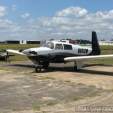What Size Tub for a Tail Weight?
-
Members Online
- RoundTwo
- acekng1
- Parker_Woodruff
- N201MKTurbo
- hammdo
- 47U
- Aerodon
- Sherifferic
- atpdave
- redbaron1982
- warbingtonmasonry
- PeterRus
- Shadrach
- 7.Mooney.Driver.0
- LOCOLJ
- kowabunga
- WilliamR
- OR75
- Bonanza flyer
- 201er
- KSMooniac
- WBASC
- Aviationist
- Speed Merchant
- Stubby
- rahill
- 802flyer
- dzeleski
- Bolter
- Ibra
- Niko182
- Yetti
- toto
- richardbrochu27
- TCC
- M20F-1968
- daytonabch04
- salty
- Mark89114
- ericrynehess
- Rmnpilot


Recommended Posts
Join the conversation
You can post now and register later. If you have an account, sign in now to post with your account.